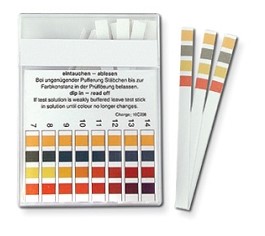Cleaning liquids
Manual cleaning is often the source of cleaning liquids and disinfectants being present in food products. Also not well designed CIP systems or errors in CIP systems often give rise to the same problem. The results are usually off-taste and off-flavours in your finished products, but the consequences can be far more serious! Do you have enough insight in the manual cleaning practices in your factory? Do you have enough insight in the CIP cleaning performance as well? Are you primarily focussing on the visual cleanliness of the equipment or do you evaluate the microbiological cleanliness as well? Next to making sure equipment is microbiologically clean it also needs to be free of remains of cleaning and disinfection agents as well.
Product which has had an interaction with cleaning or disinfection chemicals will most of the time go to waste as reworking or reprocessing is not possible. Most of the cleaning chemicals are toxic or even carcinogenic to humans and hence must be prevented from entering the food chain. In case of off-taste, off-smell or off-colour complaints do you always consider potential contamination with cleaning or disinfection chemicals as a potential root cause? More severe spills of heavy duty cleaning or disinfection chemicals might even cause personal injury of people who are eating or drinking the food products, giving you a lot of people that suffer from burns to the mouth or intestines as a result. Of course mild to severe contamination levels will clearly result in a food recall.
For manual cleaning the most important factor is to make sure the final step is rinsing with clean, potable water to get rid of any cleaning or disinfectant chemicals. Some companies use alcohol as a sanitizer, which will evaporate of course. But you must make sure you leave sufficient time for the alcohol evaporate before using the equipment in your production process. For automatic cleaning systems (CIP), the verification of absence of cleaning or disinfection chemicals in the final rinse water is usually done by using the combination of inline pH and conductivity measurements. Of course the rinse water can be used only once and it must be clean, potable water to start with. CIP system configuration is a specialist job, best done by the experts of you cleaning and disinfection chemical supplier (see http://ecolab.com or http://diversey.com for more info). Finally one aspect to take care of as well is to ensure that there is nowhere standing water in your production line as this will be a potential hold-up location for cleaning and disinfection chemicals. Hence make sure that the drainage point of your production line is always located at the lowest point and next to this you should make sure that all residual water flows to that lowest point. So in practice you will find yourself in a situation where you will have multiple drainage points in your production line to ensure all rinse water can be properly drained at the end of the cleaning cycle.

Maybe you are also interested to read:
6 Areas for Successful Allergen Management
